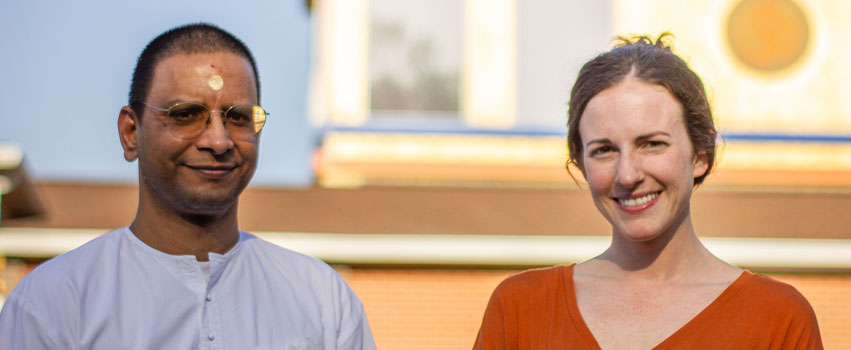
As a yoga instructor, I tuned in when some of the internet yogis I follow decided to quit teaching with the claim that as white Americans, teaching yoga was appropriating Indian culture. I sat down with Venkatesh Anandasayanam at the Hindu Temple of Central Illinois to ask what happens when white people teach an Indian tradition. Is practicing and teaching yoga as a non-Hindu person in Peoria cultural appropriation?
Beyond Movement
Cultural appropriation can be described as cherry-picking pieces of another culture without asking questions about their complex history. It includes instances like wearing a Native American headdress or geisha costume to a Halloween party, portraying an entire culture with its most stereotypical elements. Especially concerning is when the element being appropriated comes from an oppressed group of people.
In the U.S., yoga has become almost entirely associated with physical movement, but it’s much more than that. I remember a class five years ago when a yoga teacher began by drawing a circle on a piece of paper, then divided it into four slices. She told us there are four elements that make up yoga: mind/body connection, intellectual study, devotion and selfless action. Movement is only one piece of one of those slices. I needed to know more. Through a yoga teacher training, I explored yoga’s roots. There are many styles stemming from many lineages, but all traditional yoga comes from South Asian traditions that seek to teach a way of life leading to wholeness and liberation.
Anandasayanam has studied yoga under Dr. Deepak Chopra and other teachers across India. “Yoga is a means to liberation; it is not an end in itself,” he tells me. While the physical practice does lead to a healthier lifestyle, the maximum benefit of yoga comes with the study of its traditions and texts.
“If I am focusing on my body and I become strong and healthy, what is the difference between me and a strong buffalo?” he asks, suggesting that while the physical benefits of yoga are clear, it’s the spiritual and intellectual aspects that are crucial to its practice. Modern studios may offer a taste of yoga’s traditional elements, but Anandasayanam says only once a student of yoga delves into its wisdom via texts like Bhagavad Gita or the Upanishads will they truly begin to study the nature of the self and take real steps toward yoga’s end goal of liberation.

Practice Responsibly
Cultural appropriation is a real concern and should be considered when borrowing elements from any culture that is not our own. But unlike the Instagram yogis who opted to quit teaching to avoid the risk of appropriation, Anandasayanam sees all forms of yoga as beneficial. He believes non-Indian yoga teachers who are trained in the tradition sometimes have a better grasp of its roots than individuals of Indian descent. The local temple, whose members are mostly Indian, invites a white, non-Hindu woman to teach its children asana, or yoga movement.
The key is that teachers are honest about what they know. If they don’t know the relevance of a chant or a symbol, they should tell their students that or not teach it. The invitation to go deeper should always be present. It is the teacher’s job to provide students with a path to start the journey of discovery, not to pretend enlightenment happens through a yoga class. PM
- Log in to post comments

